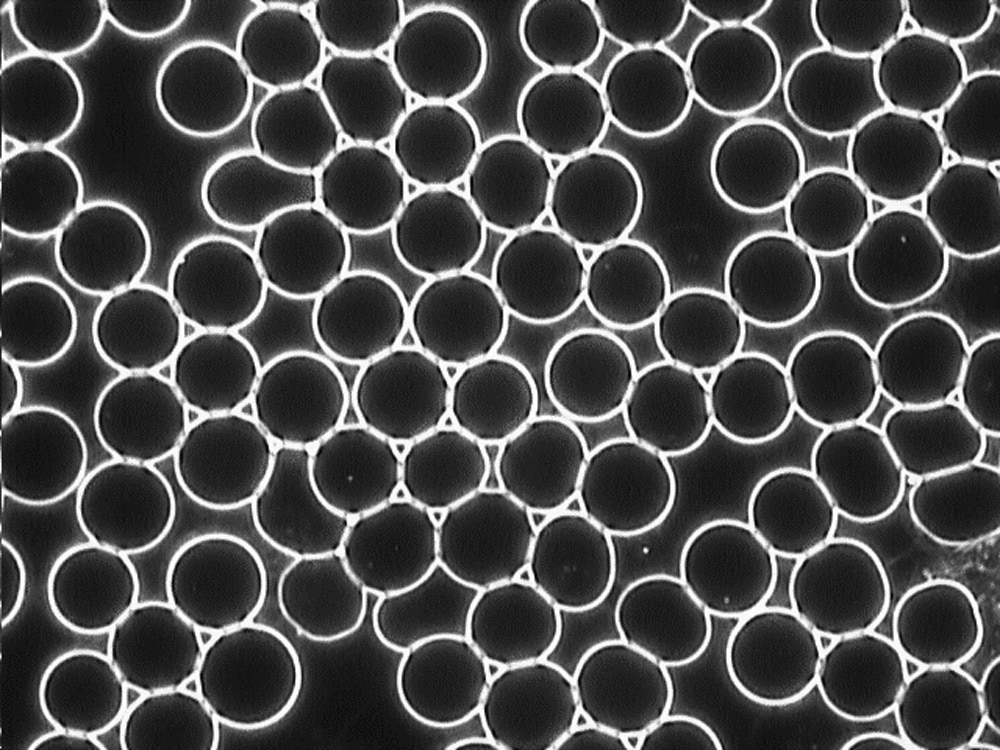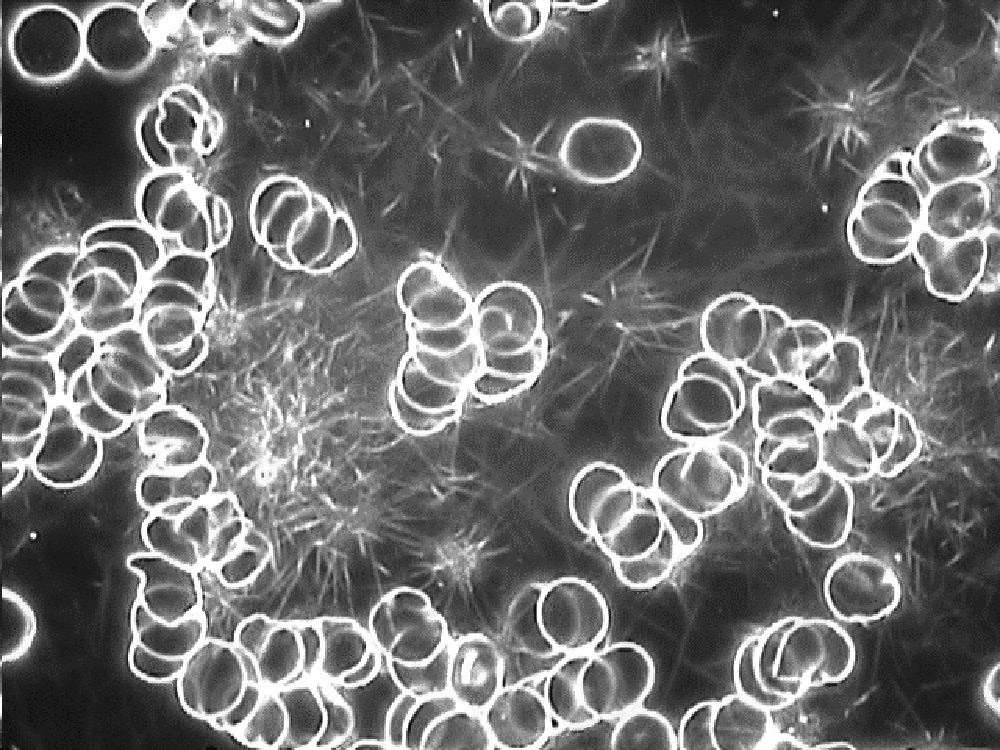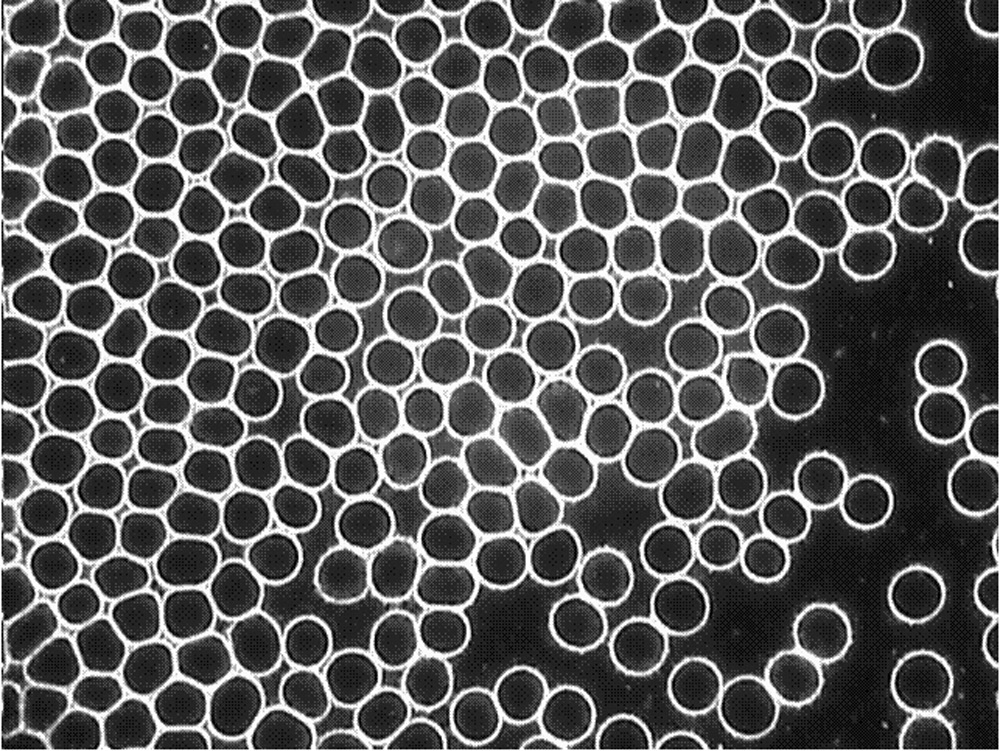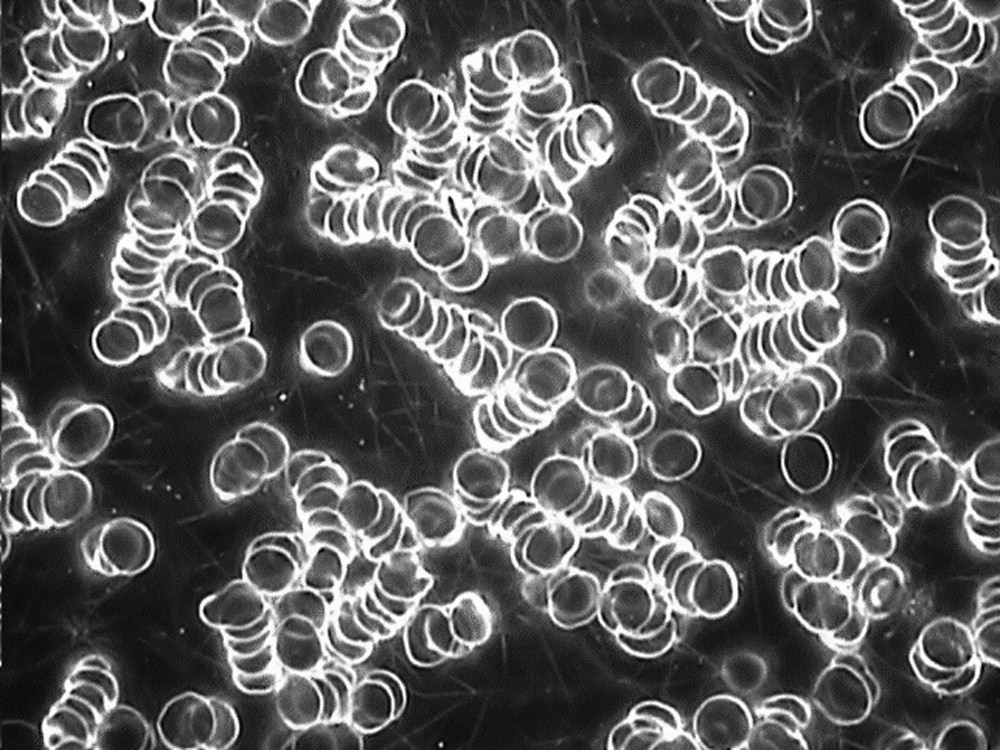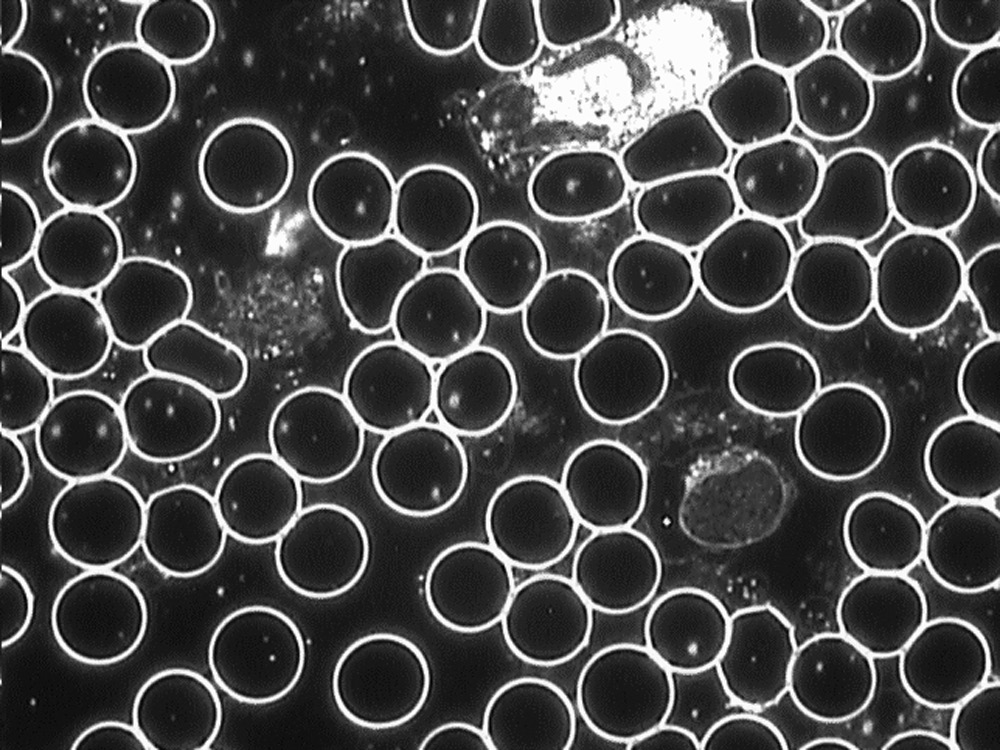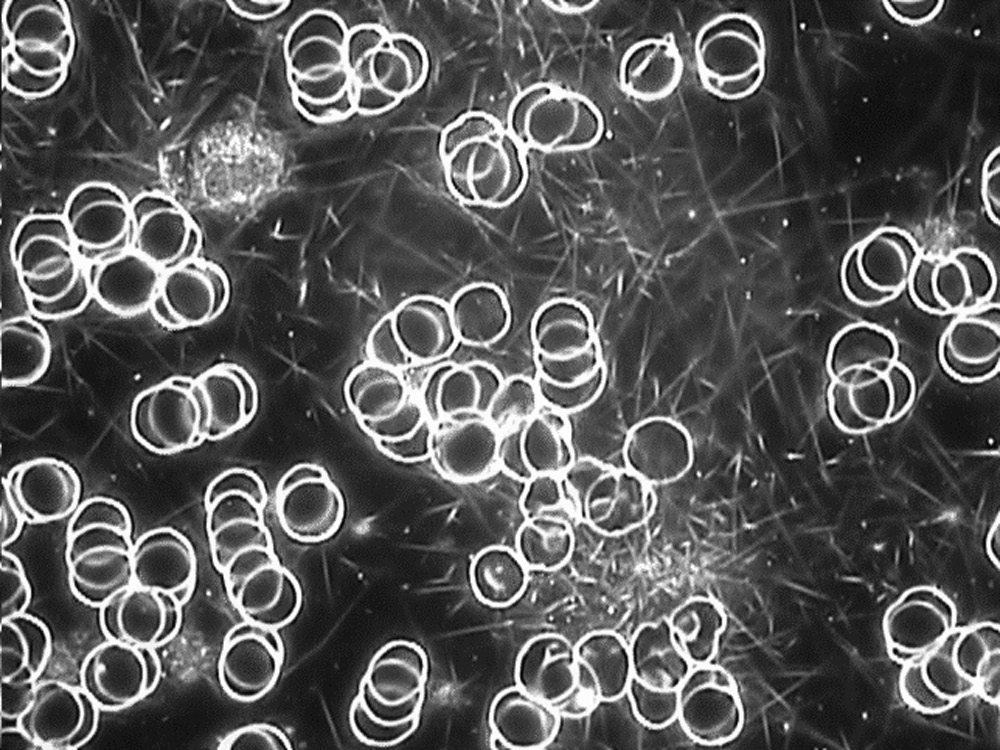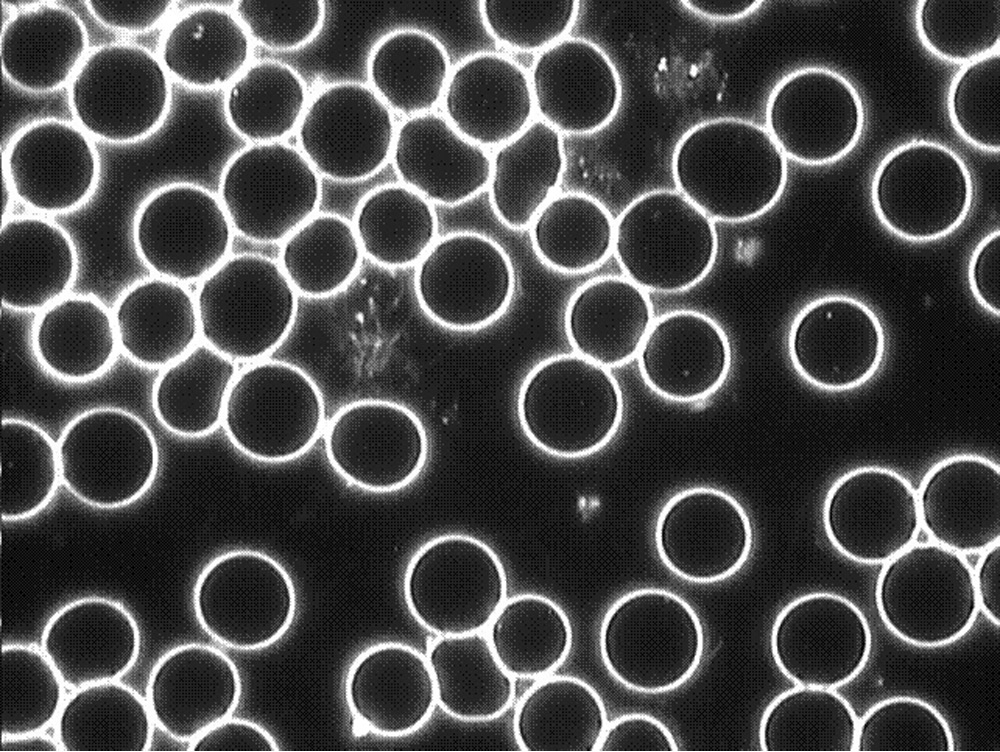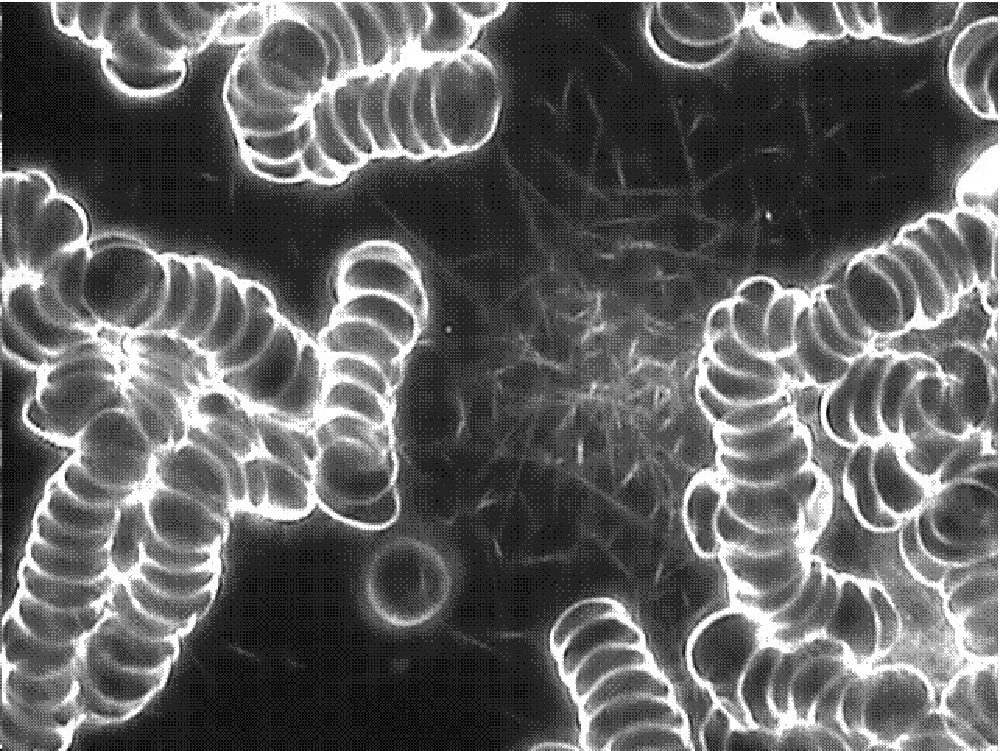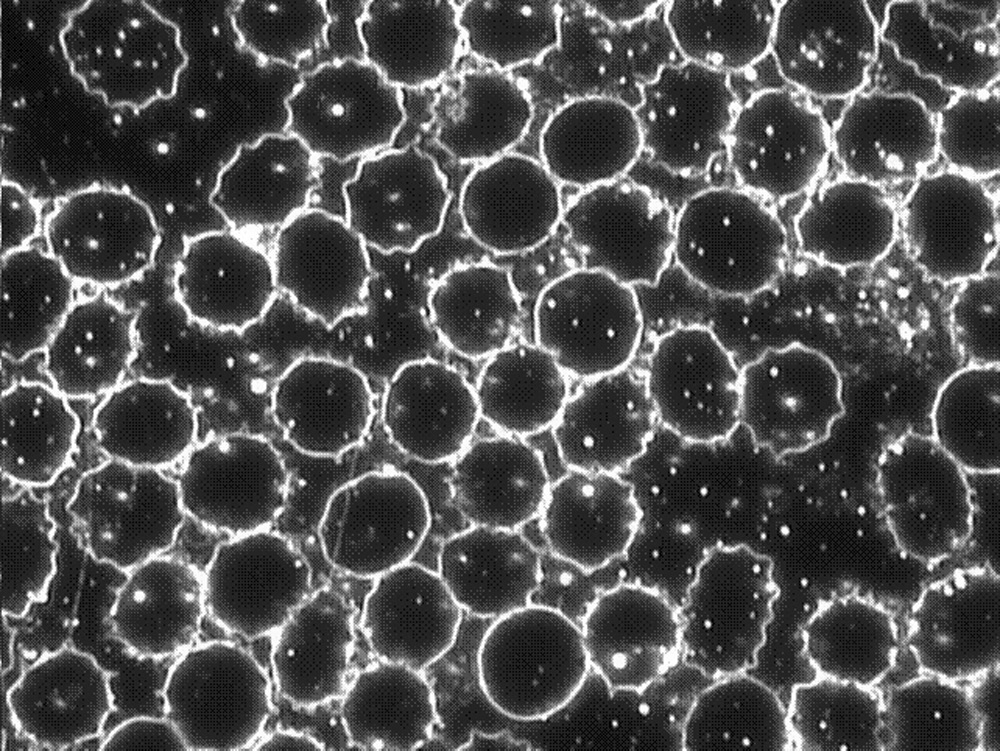Pilot Research Study Live Blood Analysis of Adults (From Weston A. Price)
Live Blood Analysis of Adults Comparing the Weston A. Price Foundation Diet and the Conventional Modern Diet
The most easily monitored tissue that shows changes in response to nutritional status is the blood. As there are numerous differences between the traditional diet recommended by the Weston A. Price Foundation (WAPF) and the conventional modern diet, we would expect to find key differences in the blood of persons consuming these two different diets. In this exploratory pilot study, we pose the following question: How do live blood analyses for persons consuming the traditional diet recommended by the Weston A. Price Foundation compare with those for persons consuming conventional modern diets?
Live blood analysis is carried out through visual examination of a small droplet of fresh capillary blood, typically taken from the fingertip, and observed under a high-powered light microscope, either dark-field or phase contrast. This method offers a qualitative visual perspective of the blood cells and state of the blood plasma at high magnification enhanced by modern optical techniques. It offers a visual perspective on the ecology of the blood, sometimes referred to as the “biological terrain.”
LIVE BLOOD ANALYSIS
Live blood analysis can reveal the presence of certain nutritional deficiencies, such as iron deficiency. It also shows the coagulation and clotting processes of the blood, which are related to the inflammatory biochemical cascade. Furthermore, the speed of degradation of the blood removed from the body and observed over time is related to biological integrity. Live blood analysis has traditionally been used in clinical medicine to look for the presence of certain parasites including the malaria parasite and the spiral-shaped bacteria that causes Lyme disease. This research tool is sometimes also used in holistic health assessment.
In live blood analysis one can observe the size, shape, variability, and cellular integrity of the red blood cells (RBCs). The stickiness and aggregation of the RBCs are also noted. The presence and relative number of white blood cells and their subtypes are noted, along with the motility (movement) of these cells. The plasma is checked for platelet aggregates, the formation of fibrin, the presence of microbial and parasitic forms, as well as particulates including cholesterol, crystals, and various contaminants.
The equipment used to conduct live blood analysis includes a dark-field or phase contrast light microscope attached to a digital video camera linked to a computer monitor. Computer software is used to capture and store microphotographs and short videos for subsequent analysis. In order to avoid sample heating, the blood specimen is illuminated by means of light delivered through fiber optics. A sterile blood lancet designed for diabetic blood testing is used to collect a droplet of peripheral blood from the fingertip, which is immediately placed on a microscope slide and then covered with a glass cover slip. Oil immersion lenses at the microscope objective and condenser are used to improve and enhance the images.
A microphotograph of healthy blood is shown in Figure 1, below. This photograph shows blood soon after it is drawn. The RBCs are discrete, uniform and round, and there is no debris in the plasma. By contrast, Figure 2, below, shows a blood sample freshly drawn from an adult with cancer. Note that the RBCs are clumped together, and fibrin (white threads) has formed, indicating the activation of blood coagulation and clotting.
SUBJECT OF INVESTIGATION
The following research questions were explored in this pilot study:
• What do we observe in live blood analysis of healthy persons consuming the WAPF diet over years?
• Using live blood analysis, how does the blood of healthy persons on the WAPF diet compare to the blood of healthy persons eating conventional modern diets, including diets containing organic and processed foods, with subjects in both groups matched for age?
PARTICIPANTS
To help recruit subjects, the Weston A. Price Foundation emailed a study announcement to its members in the San Francisco Bay Area. Over twenty people responded to the announcement, and six others were recruited by word of mouth. The twenty-six persons completed a questionnaire to ascertain their eligibility for the study. The eight best respondents, those who met subject criteria and had been consuming the WAPF diet the longest and most consistently, were invited to participate in the study. Written informed consent was obtained from subjects.
The subject criteria were as follows:
• Healthy adults over 25 years old, who self-reported “very good” to “excellent” health.
• No serious illnesses, chronic diseases, or chronic health conditions.
• No obesity; BMI (body mass index) less than 30.
• No smoking.
• No prescription drugs.
• WAPF diet consistently for at least two years.
• Presently on the WAPF diet.
• Conform to the principles of the WAPF diet at least 80 percent of the time.
THE WAPF SUBJECTS
Additional subject demographics that characterized the participants in the study were as follows:
• Age range 30 – 83.
• Mean age 51.12.
• Range of 2 to 20+ years on the WAPF diet.
• Mean number of years on the WAPF diet: 7.5 years.
• Range of 80 to 100 percent of the diet is consistent with WAPF guidelines.
• Mean percent diet per WAPF: 92 percent.
• Three nondrinkers; 5 drinkers (up to 8 drinks per week, beer and wine only, no hard liquor).
THE WAPF DIET
The characteristics of subjects’ diets are as follows:
• No processed liquid vegetable oils or partially hydrogenated oils, except for unrefined olive oil.
• No refined sugars, corn syrup or high fructose corn syrup.
• Very little or no pasteurized milk.
• Raw milk consumed by 5 out of 8 subjects; one was dairy intolerant.
• Five to 14 eggs or egg yolks/wk consumed by all, except for 1 egg-allergic subject.
• Three to 15 tablespoons of saturated fats daily; mean of 7.375 tablespoons/day.
• Consumption of conventional restaurant food 5 percent or less.
• Cod liver oil supplementation in 6 out of 8 subjects.
• Seven of 8 subjects consumed fermented foods regularly.
• All subjects prepared grains and nuts by soaking and sourdough most of the time.
CONTROL GROUP
The eight subjects on the WAPF diet were age-matched to six healthy adults not on the WAPF diet, but of similar demographics who self-reported “good” to “excellent” health; had no serious illnesses, chronic diseases or health conditions; no obesity (BMI <30); did not smoke, and took no prescription drugs. These six adults were consuming the conventional modern diet including some organic foods and various dietary supplements.
PROCEDURES AND METHODS
Live blood analysis was performed once on each subject in both groups on different days by individual appointment after five hours of fasting, during which time subjects drank only water as needed.
RESULTS
Numerous blood microphotographs and short video-clips were captured for each subject over a period of forty-five minutes since the blood was first drawn. The hundreds of microphotographs obtained are too voluminous for all the data to be shown here. Thus, only a representative sample of data will be shown for various age groups. Some graphs summarizing the overall findings are also provided.
1. COMPARISON OF YOUNG ADULTS
Figure 3, below, shows the initial blood microphotograph of the youngest subject, female, age thirty, who has been on the WAPF diet for eight years; whose diet is 90 percent WAPF; who consumes the following: 90 percent of meat eaten is from pastured animals; one quart of raw milk per week; twelve eggs per week; cod liver oil daily; six tablespoons of saturated fat daily; fermented foods three times per week; preparation of 100 percent of grains and nuts by soaking or sourdough; and no alcohol consumption.
The blood of this WAPF subject shows mostly round RBCs of relatively uniform size and without any debris in the plasma, which is characteristic of normal healthy blood, with the blood initially showing no activation of clotting or plasma debris. Compare this to the initial microphotograph of peripheral blood from a thirty-year-old female eating a modern conventional diet, shown in Figure 4, below. By contrast, this figure shows sticky RBCs aggregated into loose “rouleau” (rolls or stacks of coins) and the presence of the clotting protein, fibrin, in a network. Fibrin is seen here as white fibers that look much like a disorganized spider web. This photo shows sticky blood with activated clotting factors.
Microphotographs of blood taken at 45 minutes after blood draw for the same two 30-year-old subjects were compared. Figure 5, below, shows the blood of the female on the WAPF diet. The blood is still intact with a few areas of platelet aggregates, but no fibrin. By contrast, the blood of the female on the conventional modern diet, shown in Figure 6, below, shows that the rouleau have dissipated into smaller aggregates of RBCs, and the fibrin net is now apparent throughout the field.
2. COMPARISON OF MIDDLE-AGED ADULTS
Figure 7, below, is a blood microphotograph from a fifty-five-year-old female on the WAPF diet. She has consistently been on the WAPF diet for three years; diet is 98 percent WAPF; all of the meat that she eats is from pastured animals. She also consumes the following: two quarts raw milk per week; 14 eggs per week; five tablespoons saturated fat daily; one alcoholic drink per month; preparation of 100 percent of grains and nuts by soaking or sourdough; daily consumption of fermented foods. Figure 7 shows relatively clean blood plasma with some microbial forms, no fibrin or other clotting factors, and free RBCs.
The blood of a fifty-five-year-old male eating a conventional modern diet with supplementation is shown for comparison in Figure 8, below. Most of the RBCs in Figure 8 are grossly misshapen, which indicates that the blood is already clotting. (RBCs give up their round shape to fit together like pieces of a puzzle in a blood clot to form an impervious wall of cells.) Figures 7 and 8 were taken at the same time, thirty minutes after blood draw, for comparison.
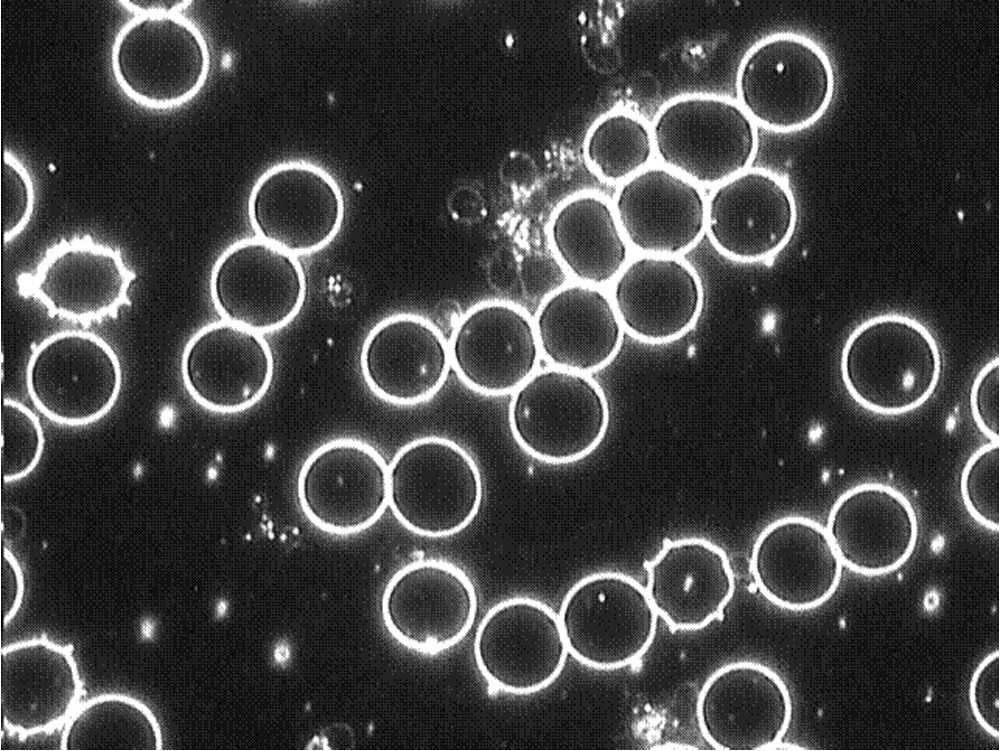 |
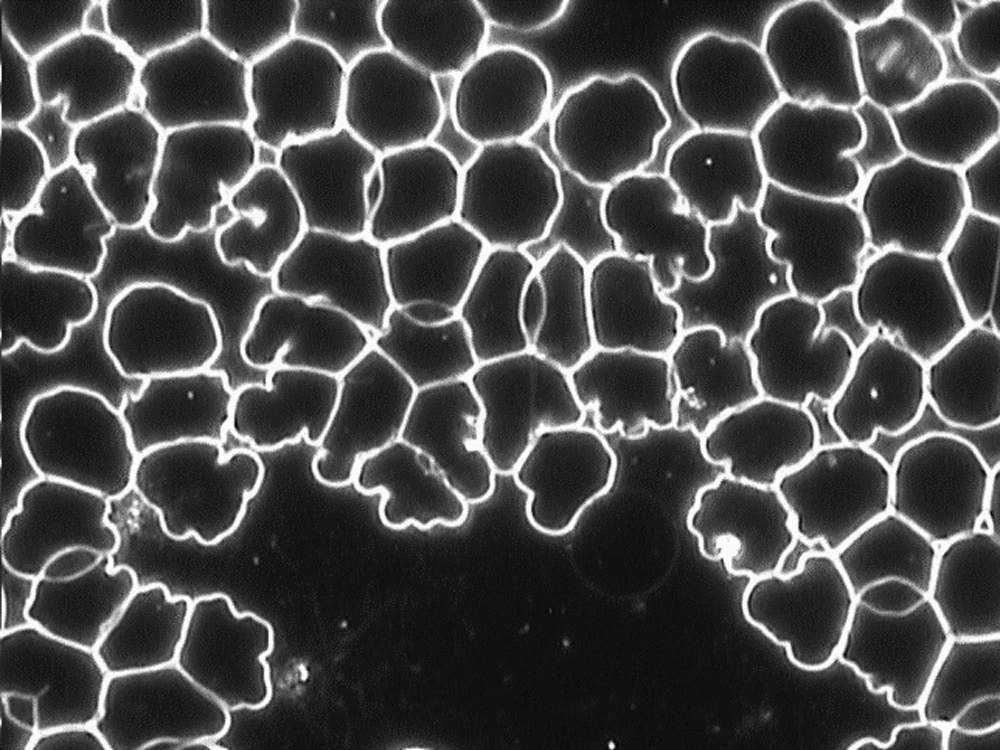 |
| Figure 7. Microphotograph of peripheral blood from a 55-year-old female on the WAPF diet. | Figure 8. Microphotograph of peripheral blood from a 55-year-old male on a conventional modern diet. |
3. COMPARISON OF ELDERLY ADULTS
Figure 9, below, shows the blood of an eighty-three-year-old male who consumed the WAPF diet for over ten years, with the following dietary habits: meat from pastured animals 80 percent; no milk; fourteen eggs per week; six tablepoons of saturated fat per day; cod liver oil supplementation daily; preparation of 90 percent of grains and nuts by soaking or sourdough; daily consumption of fermented foods; no alcohol. Figure 9 shows the blood of the eighty-three-year-old male initially. Only a few small platelet aggregates or other inclusions are found in the plasma; no clotting is seen.
The blood of a seventy-nine-year-old female on a conventional modern diet with numerous supplements provides a comparison. Figure 10, below, shows the blood of the seventy-nine-year-old female initially. Rouleau of RBCs and fibrin deposits manifested initially.
In addition, the blood of the eighty-three-year-old male on the WAPF diet was examined twenty-four hours after blood draw, shown in Figure 11, below. Although the RBCs are crenated (wrinkled), which is probably due to the slide drying out to some extent overnight, the RBCs are still intact with no sign of clotting, which is a sign of excellent biological integrity when stressed.
4. BLOOD COAGULATION SCORES COMPARED FOR THE TWO DIETS
The blood for all subjects as observed in live blood analysis was scored for factors related to clotting and inflammation by observing the following variables and scoring them using a five-level Likert scale from 0 (none; which is most desirable) to 4 (highest possible level observed; which is least desirable):
• Stickiness of RBCs.
• Rouleau and other RBC aggregates.
• Platelet activation and aggregation, which appears as a grey sludge in the blood plasma.
• Fibrin, which appears as white threads in the blood plasma.
• Spicules, a form of fibrin that appears as very short threads.
• Shape changes in RBCs, which transform from round cells to amorphous shapes that pack like bricks to form an impervious wall in a blood clot.
Figure 12, below, shows the results from subjects on the WAPF diet. Seven of the eight subjects on the WAPF diet had coagulation scores of 1.0 or less. Figure 13, below, shows the results from subjects on the conventional modern diet. All six subjects on the conventional diet had coagulation scores considerably over 1.0.
Figure 14, below, compares the mean blood coagulation scores for the two diets. As this figure clearly shows, the mean values of all five coagulation factors—rouleau, RBC aggregates, platelet aggregates, spicules (a short-threaded form of fibrin), and fibrin—for subjects on the WAPF diet are considerably less than those for subjects on the conventional modern diet. No statistical analysis was performed due to the small sample size.
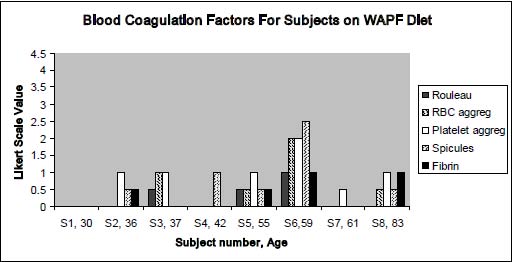
Figure 12. Graph showing data from all eight subjects on the WAPF diet, with Likert scale values of blood coagulation factors.
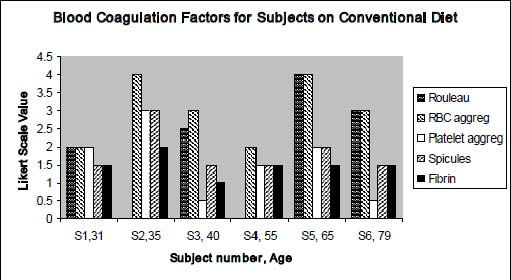
Figure 13. Graph showing data from all six subjects on the conventional modern diet, with Likert scale values of blood coagulation factors.
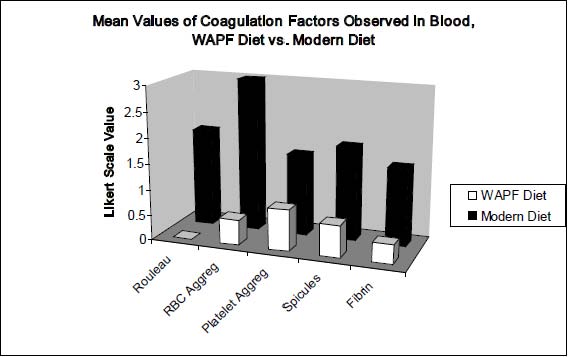
Figure 14. Mean values of coagulation factors observed in live blood, WAPF diet versus conventional modern diet.
CONCLUSIONS
1. The blood of subjects on the WAPF diet showed reduced blood coagulation and clotting within forty-five minutes compared to those on the conventional modern diet. This includes all observable coagulation factors seen in live blood analysis: rouleau and other RBC aggregates, platelet aggregates, spicules and fibrin, as well as distorted RBCs in blood clot formations.
2. Very little blood coagulation or clotting was observed in subjects on the WAPF diet up to one hour after blood draw in seven of eight subjects and after twenty-four hours in at least two subjects, whereas the blood of those on the conventional modern diet was largely coagulated and clotted in less than one hour.
3. Higher levels of chylomicrons (lipid transport particles) in the blood of WAPF subjects compared to conventional modern diet subjects were observed. (Note: This feature is not observable here due to the resolution of photographs provided.)
DISCUSSION
Reduced RBC clumping observed in the blood of subjects on the WAPF diet may be associated with improved peripheral blood circulation, particularly in the microcapillaries throughout the body. This finding is desirable because enhanced peripheral blood flow delivers more nutrients and oxygen to tissues while also removing wastes. Moreover, the longer blood coagulation time observed in the blood of subjects on the WAPF diet is known to be associated with reduced risk of cardiovascular disease, which is the number one chronic disease as well as the most fatal disease of our times. In addition, a longer blood coagulation time is associated with decreased biochemical inflammation throughout the body. Decreased inflammation is generally associated with reduced risk of chronic degenerative disease overall. That is, the results are consistent with a possible reduced risk of cardiovascular disease, cancer, autoimmune disorders, arthritis, and other chronic degenerative diseases for the WAPF group.
It must be pointed out that rapid onset of blood coagulation and clotting in fresh blood draws are generally associated with increased inflammation. Activation of the immune response activates the inflammatory biochemical cascade, which produces blood clotting, presumably to wall off an invading entity, such as a microbe, virus, or cancer cell. Once this process is initiated, then blood coagulation with fibrin deposits promotes even further inflammation.
However, inflammation is a double-edged sword. Whereas it is desirable to wall off and destroy invading entities, it is undesirable to have a state of chronic inflammation throughout the body. In fact, exaggerated and chronic inflammation contributes to chronic disease in numerous ways. For example, a blood clot on a ruptured atherosclerotic plaque may lead to arterial blockage, which directly causes the thrombosis responsible for a heart attack or stroke. As another example, coagulation with fibrin formation in synovial joint fluid is implicated in inflammatory types of arthritis that may lead to permanent joint damage. As a third example, repeated inflammation of tissue is a causal factor in cancer. As a fourth example, chronic inflammation, whereby one makes antibodies against and fights one’s own DNA, lies at the root of autoimmune disease.
How might long-term consumption of the WAPF diet contribute to reduced blood coagulation and chronic inflammation? One important factor in the WAPF diet is the proper ratio of omega-3 fatty acids to omega-6 fatty acids, with small amounts of each type. By contrast, the conventional modern diet typically contains too high a level of omega-6 fatty acids while lacking a sufficient level of omega-3 fatty acids. This imbalance is known to facilitate inflammatory biochemistry.
Second, it should be pointed out that the WAPF diets contained levels of saturated fatty acids greatly exceeding the amounts recommended in official government dietary guidelines. A higher level of chylomicrons, lipid carriers in the blood, was seen for those on the WAPF diet, which is consistent with the higher saturated fat intake. Saturated fats are said to cause the deposition of plaque and to provoke inflammation, leading to cardiovascular disease. However, this preliminary study indicates that the consumption of large amounts of saturated fat does not adversely affect blood cell integrity and clotting or inflammation factors. In fact, we observed just the opposite, namely, that high levels of saturated fats in the diet seem to have a protective effect on the RBCs and to inhibit the expression of inflammation.
Third, the WAPF diet does not contain any processed foods such as soy milk or pasteurized milk with denatured components that may act to promote inflammation in the body. There are no trans fats and no genetically modified organisms in natural unprocessed organic foods.
Fourth, almost all of the WAPF subjects consumed cod liver oil regularly, which provides vitamins A and D, known to provide anti-inflammatory and other beneficial effects.
Fifth, the WAPF diet is low carbohydrate, with a large part of the carbohydrate content coming from soaked or partly fermented grains, the bulk of calories coming from clean saturated fats without pesticide or herbicide contamination, which may be the least toxic and most efficient means of obtaining calories.
Finally, the high probiotic content in the WAPF diet due to the frequent consumption of freshly prepared fermented foods with living microbes assures a healthy digestive system with no leaky gut syndrome. Therefore, no antigenic substances are leaking into the bloodstream causing an immune response activating the inflammatory cascade.
The study has some limitations. It involved a small number of subjects (N=14) who were each measured only once. Live blood analysis is not a conventional blood test accepted by the mainstream, even though it reveals important visual information about the biological terrain, and blood coagulation and clotting.
Live blood analysis is a qualitative test with Likert scoring of variables that requires observing multiple sites of the blood sample on the glass slide, because one region alone may not be representative. Artifacts must be avoided by close attention to detail, including careful sample preparation. For any replication of this study, it is critical that testing be performed by a trained and experienced microscopist as was done in this trial.
Further research studies are encouraged to follow up and expand on these results. Specifically, it is recommended that blood levels of key biochemical markers associated with chronic inflammation on a population of subjects on the WAPF diet be compared to those consuming the conventional modern diet.
The results obtained in this study are visually compelling and extend our understanding about how traditional and modern diets impact our health. In short, unhealthy food, as consumed in the conventional modern diet, contains some abnormal and unhealthy substances that tell our bodies to fight, activating the immune and inflammatory responses, leading to early blood coagulation and clotting. Healthy food, as consumed in the WAPF diet, is all-natural, easy to digest and contains many protective elements, and does not tell our bodies to turn on the inflammatory cascade, as there is nothing offensive to fight.
ACKNOWLEDGMENT
This study was supported in part by a small grant from the Weston A. Price Foundation.
This article appeared in Wise Traditions in Food, Farming and the Healing Arts, the quarterly magazine of the Weston A. Price Foundation, Winter 2009.
